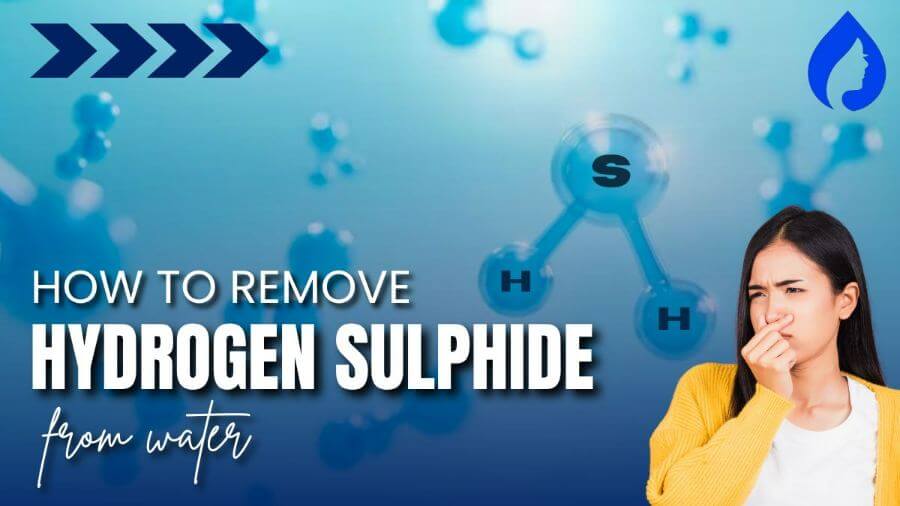
There’s nothing more off-putting than the “rotten egg” smell caused by as little as 0.5 mg/L hydrogen sulfide in your water supply.
This pesky contaminant can also lead to black stains and corrosion in pipes and discolor your silverware.
Here’s how to remove hydrogen sulfide from water:
Carbon filters can handle trace amounts, but aeration (adding air to water) is more effective for removing hydrogen sulfide at concentrations less than 2 mg/L, and iron filters are suitable for concentrations less than 10 mg/L.
The best option, however, is chlorination.
Keep reading for a comprehensive hydrogen sulfide removal guide with expert advice and proven techniques to ensure you never have to again deal with that unpleasant odor!
🤔How to Remove Hydrogen Sulfide From Well Water?
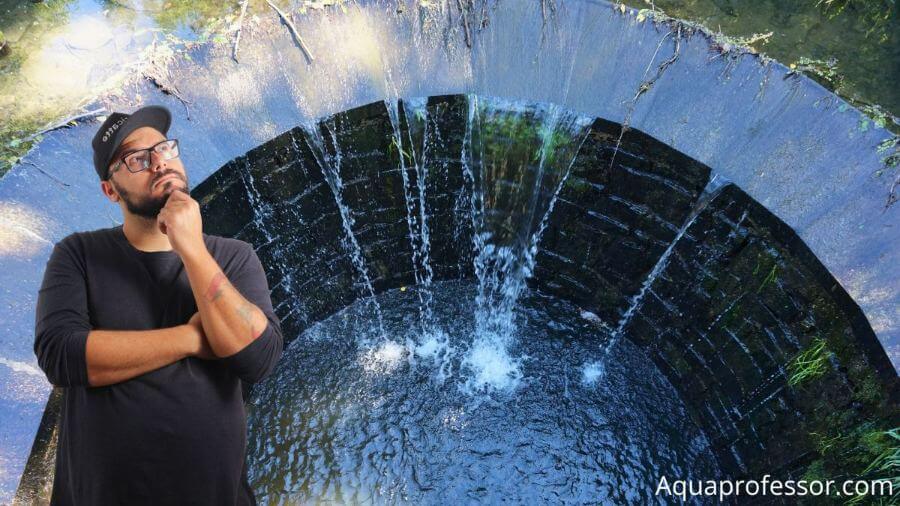
Before diving into solutions, it’s essential to confirm the source of the rotten egg smell to ensure that we are dealing with hydrogen sulphide.
If you notice the odor coming only from your hot water faucet, the issue lies within your water heater.
Follow these solutions for the same:
⚙️Replacing Magnesium Anode Rod
Water heaters contain a sacrificial anode rod, typically made of magnesium, which protects the water heater from corrosion by attracting corrosive elements.
However, this process can contribute to hydrogen sulfide production as the magnesium reacts with sulfur-reducing bacteria.
To address this issue, homeowners can replace the magnesium anode rod with one made of aluminum or zinc. These alternative materials still protect the water heater from corrosion but are less likely to have sulfur bacteria that contribute to hydrogen sulfide production.
⬆️Increasing Water Heater Temperature
Sulfur-reducing bacteria contribute to hydrogen sulfide formation and thrive at lower temperatures. Increasing the water heater temperature to around 140°F (60°C) can eliminate these bacteria, reducing hydrogen sulfide levels.
It is essential to exercise caution when adjusting the water temperature, as higher settings may pose scalding risks, especially for children and older adults. Installing anti-scald devices on faucets can help prevent such accidents.
🧪Use Chlorine Bleach
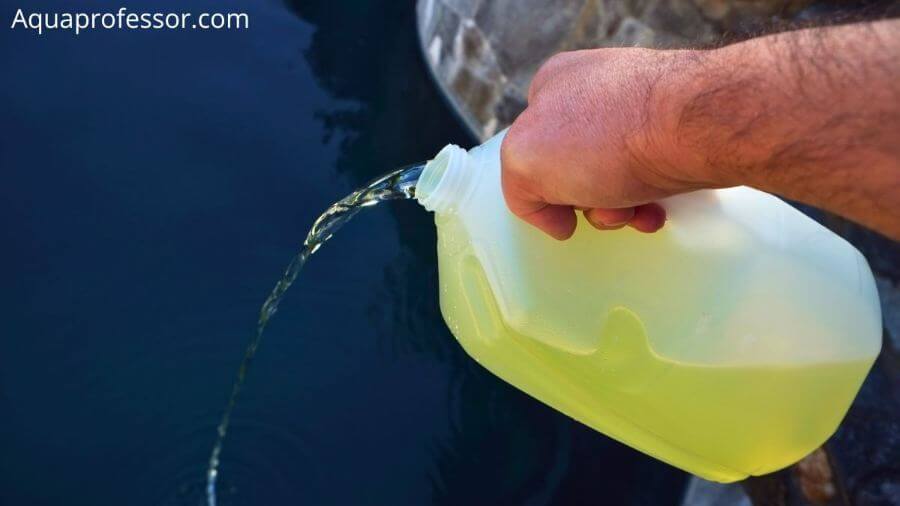
Adding chlorine bleach to the household water supply converts hydrogen sulfide into a non-toxic, odorless form. Homeowners can use various methods to add chlorine to their water supply, such as liquid bleach injection or pellet droppers.
However, hydrogen sulfide can return if water is not consistently treated with chlorine. So maintain regular water treatment schedules and follow the recommended dosage based on water quality testing results.
If the problem persists in groundwater, test your water for exact hydrogen sulfide concentrations. This Tapscore test can help you determine the levels present in your water supply.
Based on your test results, refer to the table below to identify the most suitable treatment option:
| Method | Sulfide Treatment Range |
| Carbon filters (GAC and Catalytic) | Less than 0.3 mg/L |
| Aeration | Less than 2 mg/L |
| Oxidation | Less than 6 mg/L |
| Using iron removal filters | Less than 10 mg/L |
| Continuous chlorination | Less than 75 mg/L |
| Ion exchange | More than 75 mg/L |
| Shock chlorination | If sulfur-reducing bacteria are detected |
Also Read: Coliform Bacteria In Well Water
⚫Carbon Filters (GAC and Catalytic)
Granular Activated Carbon (GAC) filters contain tiny carbon particles with a large surface area, enabling them to adsorb impurities.
Water flows through the GAC filter, and the hydrogen sulfide molecules adhere to the carbon surface, removing the hydrogen sulfide gas from the water.
Catalytic carbon filters function similarly but use specially treated activated carbon with enhanced catalytic properties.
It allows them to remove higher concentrations of hydrogen sulfide and other contaminants more effectively than GAC filters.
You should regularly replace the activated carbon media as per the manufacturer’s recommendations.
The replacement frequency depends on the hydrogen sulfide concentration in the water and the carbon filter capacity.
🌬️Aeration
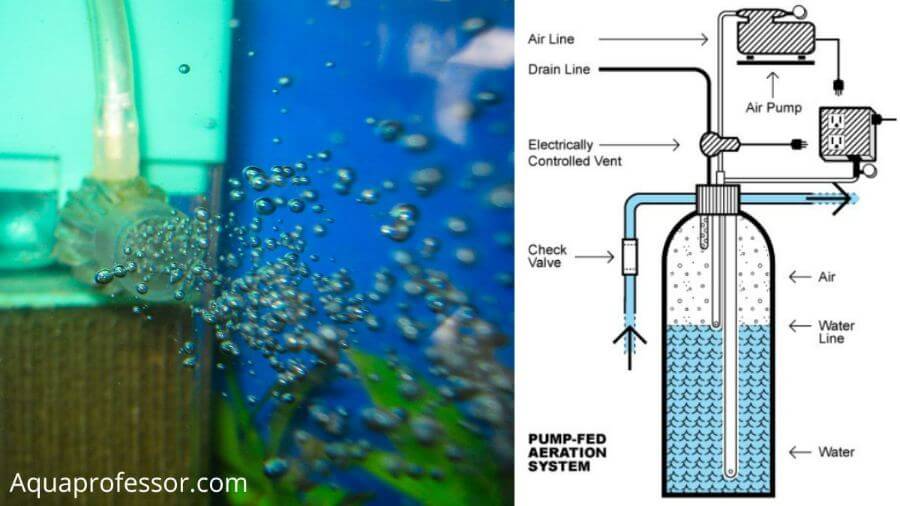
Aeration systems introduce oxygen into the water, which reacts with hydrogen sulfide, converting it into a solid, odorless form that can be easily removed.
Different types of aeration systems are available, including diffused aeration, spray aeration, and cascade aeration.
The choice of system depends on factors like water quality, flow rate, and functional space.
You must regularly clean or replace any filters that remove the solid particles formed during aeration.
Inspect the aeration equipment, such as pumps, diffusers, and spray nozzles, for signs of wear or damage and ensure proper airflow to maintain effective oxidation.
🅾️Oxidation
Oxidation involves introducing an oxidizing agent into the water to convert hydrogen sulfide into a solid, odorless form that can be easily removed.
For its proper maintenance, regularly clean or replace any filters that remove the solid particles formed during aeration.
Inspect the aeration equipment for signs of wear or damage, and ensure proper airflow to maintain effective oxidation.
⚒️Iron Removal Filters
Iron removal filters use a media bed containing Iron and manganese greensand or other oxidizing agents. The hydrogen sulfide is oxidized and converted into solid particles as the water flows through the filter.
These solid particles are trapped within the filter media, effectively removing hydrogen sulfide from the water.
You must backwash the filter regularly (typically every 3-7 days) to remove accumulated solids and regenerate the filter media.
Replace the media as needed, usually every 2-5 years, depending on water quality and usage.
🔁Continuous Chlorination
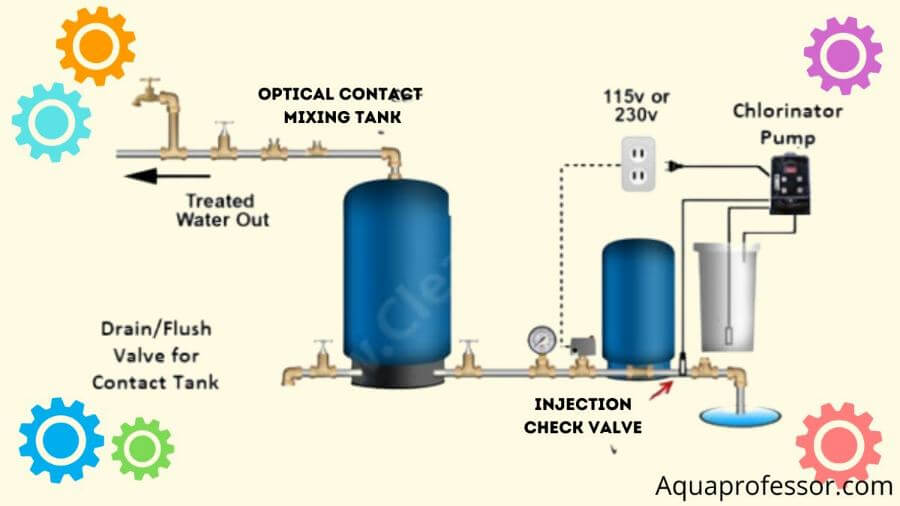
Continuous chlorination involves adding small amounts of chlorine to the water supply through a liquid bleach injection system or pellet droppers.
The chlorine reacts with the hydrogen sulfide, neutralizing the gas and converting it into a solid, odorless form.
This method helps maintain water quality by continuously treating the water supply and preventing the growth of sulfur-reducing bacteria that can produce hydrogen sulfide.
You should regularly check the chlorine injection system for proper operation and ensure adequate chlorine supply. Monitor chlorine levels in the water to maintain effective treatment and adjust dosages as needed.
👉Ion Exchange
Ion exchange systems remove hydrogen sulfide by replacing sulfide ions in the water with less harmful ones like chloride or sodium.
This process occurs within a resin bed, where the sulfide ions are attracted to the resin and exchanged for other ions.
You should regenerate the resin bed periodically with a brine solution to remove accumulated sulfide ions and restore the resin’s capacity.
The regeneration frequency depends on the hydrogen sulfide concentration in the water and the system’s capacity.
🎯Shock Chlorination
Shock chlorination is a one-time treatment that involves introducing a high chlorine concentration into the well to eliminate sulfur bacteria and oxidize hydrogen sulfide.
Steps:
It is essential to follow appropriate guidelines for shock chlorination, including the correct dosage and safety precautions.
It is effective when sulfur-reducing bacteria are detected in the water supply, regardless of the hydrogen sulfide concentration.
Note:
While understanding the various water treatment options for removing hydrogen sulfide gas is essential, consulting a licensed local plumber or water treatment professional for guidance is crucial. They can assess your water quality, identify specific concerns, and recommend tailored solutions based on your needs.
If none of these methods work, you have two options:
Also Read: Well vs City Water
❓Is Hydrogen Sulfide in Water Dangerous?
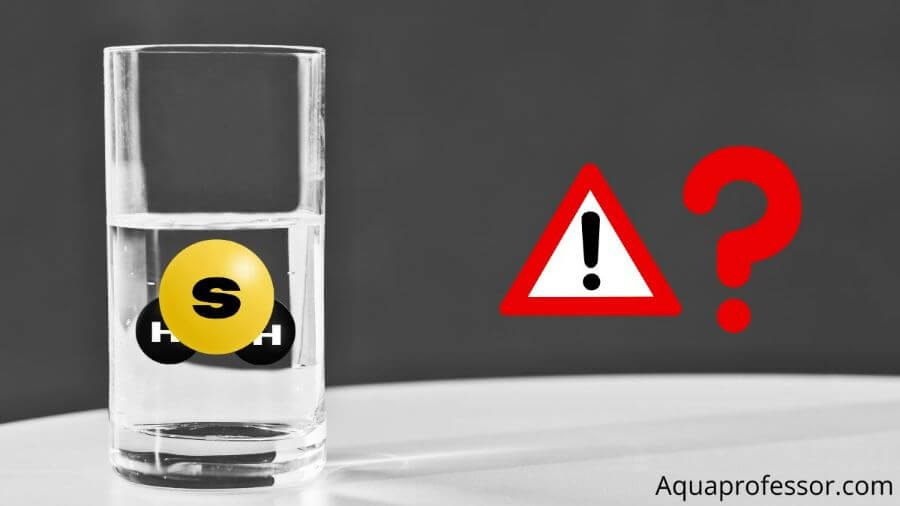
While the unpleasant “rotten egg” hydrogen sulfide odor can be a cause for concern, hydrogen sulfide in water isn’t considered dangerous and is not regulated by the EPA (Environmental Protection Agency).
The same goes for sulfur-reducing bacteria. However, there are still some reasons why you wouldn’t want hydrogen sulfide in your water:
It’s important to note that while hydrogen sulfide level in water isn’t harmful, it can be lethal in the air. OSHA provides crucial information about the hazards of hydrogen sulfide gas exposure and how to protect yourself.
Also Read: Is Sulfur In Water Deadly?
💡How To Remove Hydrogen Sulfide From Water: FAQs
How does hydrogen sulfide get into the water?
Natural processes, such as the breakdown of organic matter and the action of sulfur-reducing bacteria, introduce hydrogen sulfide into water. It may also infiltrate water sources due to industrial processes or polluted runoff.
Is it safe to shower in hydrogen sulfide water?
Yes, it is generally safe to shower in hydrogen sulfide water.
The unpleasant strong hydrogen sulfide odor may be the primary concern, but hydrogen sulfide in water isn’t harmful at typical household concentrations.
If you have sensitive skin, the sulfur particles in water may irritate it.
Can a water filter remove hydrogen sulfide?
Water filters, such as activated carbon filters, can remove trace amounts of hydrogen sulfide.
However, iron filters are more effective for higher concentrations of hydrogen sulfide. Choosing the appropriate filter is essential based on your water’s hydrogen sulfide levels.
What neutralizes hydrogen sulfide?
Hydrogen sulfide may be successfully neutralized by oxidizing chemicals such as chlorine, potassium permanganate, and hydrogen peroxide.
Other treatment procedures that eliminate hydrogen sulfide, like aeration and iron filtering, may also aid in removing gas from water.
What are the symptoms of hydrogen sulfide in water?
Symptoms of hydrogen sulfide in water include:
1. The characteristic rotten egg smell.
2. Black stains on fixtures.
3. Corrosion of pipes.
4. Discoloration of silverware.
High concentrations of hydrogen sulfide in water may promote bacterial growth.
Sayan understands that access to clean water doesn’t have to be costly.
He strives to provide knowledge of water purification techniques in the simplest way possible so that we can lead a healthy life without breaking our bank.
